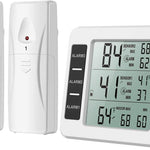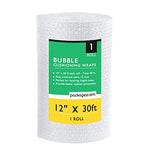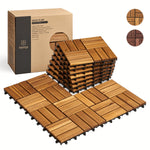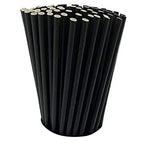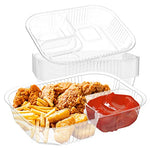You have no items in your shopping cart.
Welcome to our comprehensive guide on the topic of "Pests are a Food Safety Hazard Because They." In this article, we will explore the critical issue of pests in food facilities and how they can jeopardize food safety. With in-depth insights and expert advice, we will cover the various risks posed by pests and offer valuable tips to ensure your food production, storage, and distribution processes remain safe and free from contamination. Let's dive in and equip ourselves with the knowledge to protect consumers and uphold food safety standards effectively.
Pests are a Food Safety Hazard Because They - Understanding the Threat:
Pests in Food Facilities - A Major Concern Pests, such as rodents, insects, and birds, can infiltrate food facilities, leading to severe health hazards. They are carriers of pathogens and contaminants that can contaminate food products, making them unfit for human consumption. The presence of pests in food establishments not only compromises the quality of food but also raises concerns about the spread of diseases.
The Role of Pests in Food Contamination Pests are not only nuisances but also active contributors to food contamination. Rodents, for instance, can chew through packaging, causing physical contamination, while insects can lay eggs or deposit waste on food surfaces, leading to biological contamination. Additionally, pests can carry foodborne pathogens such as Salmonella and E. coli, further escalating the risk of foodborne illnesses.
The Impact of Pest Infestation on Food Safety Standards Food safety standards and regulations are in place to ensure the highest level of protection for consumers. However, when pests infiltrate food facilities, they create an environment that violates these essential standards. Infestations can lead to severe consequences, such as product recalls, loss of consumer trust, and potential legal actions against the food facility.
Identifying the Common Pests and Their Risks:
Cockroaches - Silent Carriers of Pathogens Cockroaches are known to carry harmful bacteria and can spread them to food and food preparation surfaces. Their presence in a food facility can lead to cross-contamination and serious health risks for consumers.
Rodents - Destroyers of Food Integrity Rodents pose a significant threat to food safety as they can gnaw through packaging, containers, and electrical wires. Their feces, urine, and fur can contaminate food, rendering it hazardous for consumption.
Flies - Potential Contaminators Flies are attracted to various food items and can carry bacteria and other microorganisms on their bodies. When they land on exposed food, they transfer these contaminants, leading to foodborne illnesses.
Understanding the Root Causes of Pest Infestations:
Inadequate Sanitation - A Breeding Ground for Pests Poor sanitation practices create an inviting environment for pests. Leftover food debris, spills, and improperly stored waste attract pests and provide them with a stable food source.
Cracks and Crevices - Entry Points for Pests Gaps and openings in walls, doors, and windows offer easy access for pests to enter food facilities. Identifying and sealing these entry points is crucial in preventing infestations.
Storage Practices - Vulnerabilities in Pest Management Improper storage of food items can attract pests and compromise food safety. Ensuring proper storage methods and containers can minimize these vulnerabilities.
Effective Pest Prevention and Control Strategies:
Implementing Integrated Pest Management (IPM) Techniques IPM is a systematic approach that involves identification, prevention, and control of pests using eco-friendly methods. It focuses on minimizing pesticide usage while maximizing effectiveness in pest eradication.
Regular Inspections and Monitoring - Staying One Step Ahead Frequent inspections help identify pest issues early on, enabling prompt action. Monitoring devices can be strategically placed to detect pest activity and take preventive measures promptly.
Training and Education for Staff - Building Awareness Educating staff about the risks of pests and the importance of adherence to food safety protocols is essential in preventing infestations. Proper training empowers employees to contribute actively to pest management efforts.
FAQs - Addressing Common Concerns:
Q: How can pests contaminate food? A: Pests can contaminate food through physical contact, feces, urine, and by carrying harmful bacteria and pathogens.
Q: Are there non-toxic ways to control pests in food facilities? A: Yes, Integrated Pest Management (IPM) techniques focus on eco-friendly and low-toxicity methods to manage pests effectively.
Q: Can a single pest sighting indicate a severe infestation? A: Yes, pests are often found in groups, so a single sighting may indicate a larger infestation.
Q: How frequently should food facilities undergo pest inspections? A: Regular inspections, ideally conducted quarterly, are essential to detect and address pest issues promptly.
Q: What is the significance of maintaining food safety standards in the face of pest infestations? A: Upholding food safety standards ensures that consumers are protected from potential health risks associated with contaminated food.
Q: What are the legal implications of pest-infested food facilities? A: Infestations can lead to lawsuits, product recalls, and damage to a company's reputation.
Conclusion: Pests are undeniably a significant food safety hazard, as they can compromise the integrity of food products and pose health risks to consumers. By understanding the risks posed by pests, identifying vulnerable areas in food facilities, and implementing effective prevention and control strategies, we can safeguard the quality and safety of our food supply chain. It is essential for all stakeholders in the food industry to work collaboratively to ensure that pests are kept at bay and that consumers can enjoy safe and uncontaminated food products.


